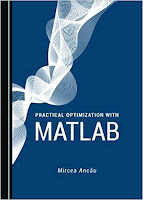LimitState: GEO UpDated
 LimitState: GEO v3.6.1.26217 x64 [Size: 127 MB] ... This is a powerful geotechnical analysis Software. It provides unique geotechnical analysis capabilities to rapidly determine the critical failure mechanism and margin of safety for any problem. It tackles any ultimate limit state analysis or design problem involving slope stability, bearing capacity, walls, foundations, reinforced soil, or complex combined systems.
LimitState: GEO v3.6.1.26217 x64 [Size: 127 MB] ... This is a powerful geotechnical analysis Software. It provides unique geotechnical analysis capabilities to rapidly determine the critical failure mechanism and margin of safety for any problem. It tackles any ultimate limit state analysis or design problem involving slope stability, bearing capacity, walls, foundations, reinforced soil, or complex combined systems.It can handle design and analysis problems of any geometry and loading conditions. No need to resort to application-specific hand calculations, spreadsheets, or software applications that attempt to automate these. It is as straightforward as conventional Limit Equilibrium methods but can model global soil failure, retaining wall stability, and bending failure. It can model supported and unsupported excavations, considering the effects of surface surcharges. Identify a wide range of failure mechanisms, including base heave and lateral instability.
LimitState: GEO is the only commercially available geotechnical software product to use the ground-breaking Discontinuity Layout Optimization (DLO) limit analysis technology that allows one tool to rapidly and directly evaluate stability, whatever the problem geometry. LimitState: GEO has been designed to be extremely easy to use, fully compatible with Eurocode 7, and output has been validated against a wide range of benchmark problems. Examples of the many applications of the software include: Footings / foundations + Cantilever stem walls + Reinforced soil + Slope stability + Seismic forces + Gabion walls + Gravity retaining walls + Deep excavations.







